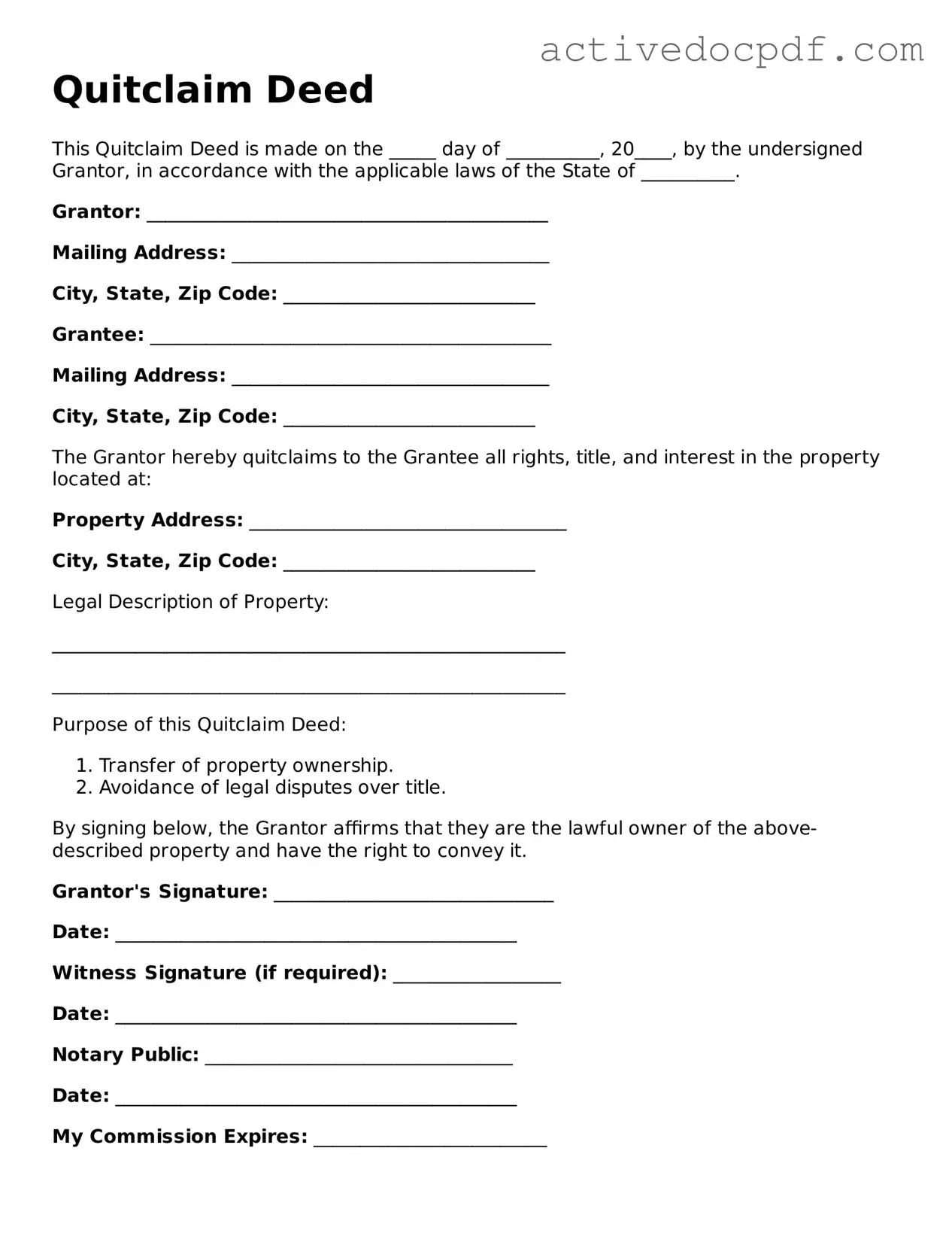What is a Quitclaim Deed?
A Quitclaim Deed is a legal document that allows a person to transfer their interest in a property to another person. Unlike other types of deeds, a Quitclaim Deed does not guarantee that the person transferring the property has any ownership rights. It simply conveys whatever interest the grantor may have in the property, if any.
When should I use a Quitclaim Deed?
Quitclaim Deeds are often used in specific situations, such as:
-
Transferring property between family members.
-
Removing a spouse from a property title after a divorce.
-
Transferring property into a trust.
-
Clearing up title issues or claims.
They are not typically used for sales or purchases, as they do not provide the buyer with any assurances about ownership.
How do I complete a Quitclaim Deed?
Completing a Quitclaim Deed involves several steps:
-
Identify the parties involved: the grantor (the person transferring the property) and the grantee (the person receiving the property).
-
Provide a legal description of the property. This is often found on the property’s deed or tax records.
-
Sign the deed in front of a notary public.
-
File the completed Quitclaim Deed with the appropriate local government office, usually the county recorder’s office.
Do I need a lawyer to create a Quitclaim Deed?
While it's possible to create a Quitclaim Deed without a lawyer, consulting one can be beneficial. A lawyer can ensure that the deed is completed correctly and that all legal requirements are met. This can help prevent future disputes or issues regarding property ownership.
What are the risks of using a Quitclaim Deed?
Using a Quitclaim Deed carries certain risks. Since it does not guarantee ownership, the grantee may not receive clear title to the property. If the grantor does not actually own the property, the grantee could end up with nothing. Additionally, any liens or debts associated with the property may still affect the new owner.
Can a Quitclaim Deed be revoked?
Once a Quitclaim Deed is executed and recorded, it generally cannot be revoked. The transfer of interest is considered final. However, if there are specific circumstances, such as fraud or undue influence, legal action may be taken to challenge the deed.
Is a Quitclaim Deed the same as a Warranty Deed?
No, a Quitclaim Deed is not the same as a Warranty Deed. A Warranty Deed provides guarantees about the grantor's ownership and the property’s title. It assures the grantee that the property is free from claims or liens. In contrast, a Quitclaim Deed offers no such guarantees, making it a less secure option for transferring property.
